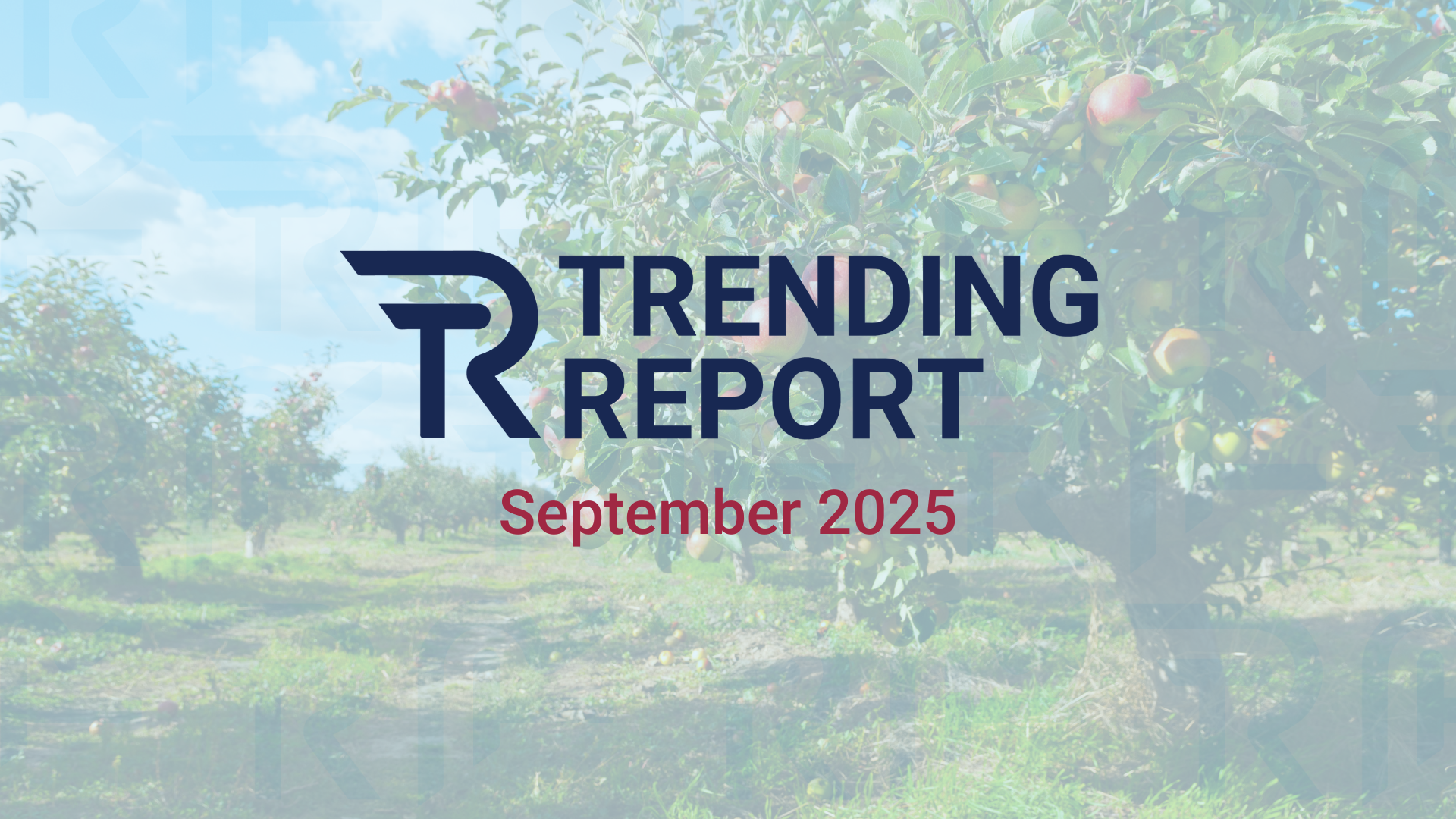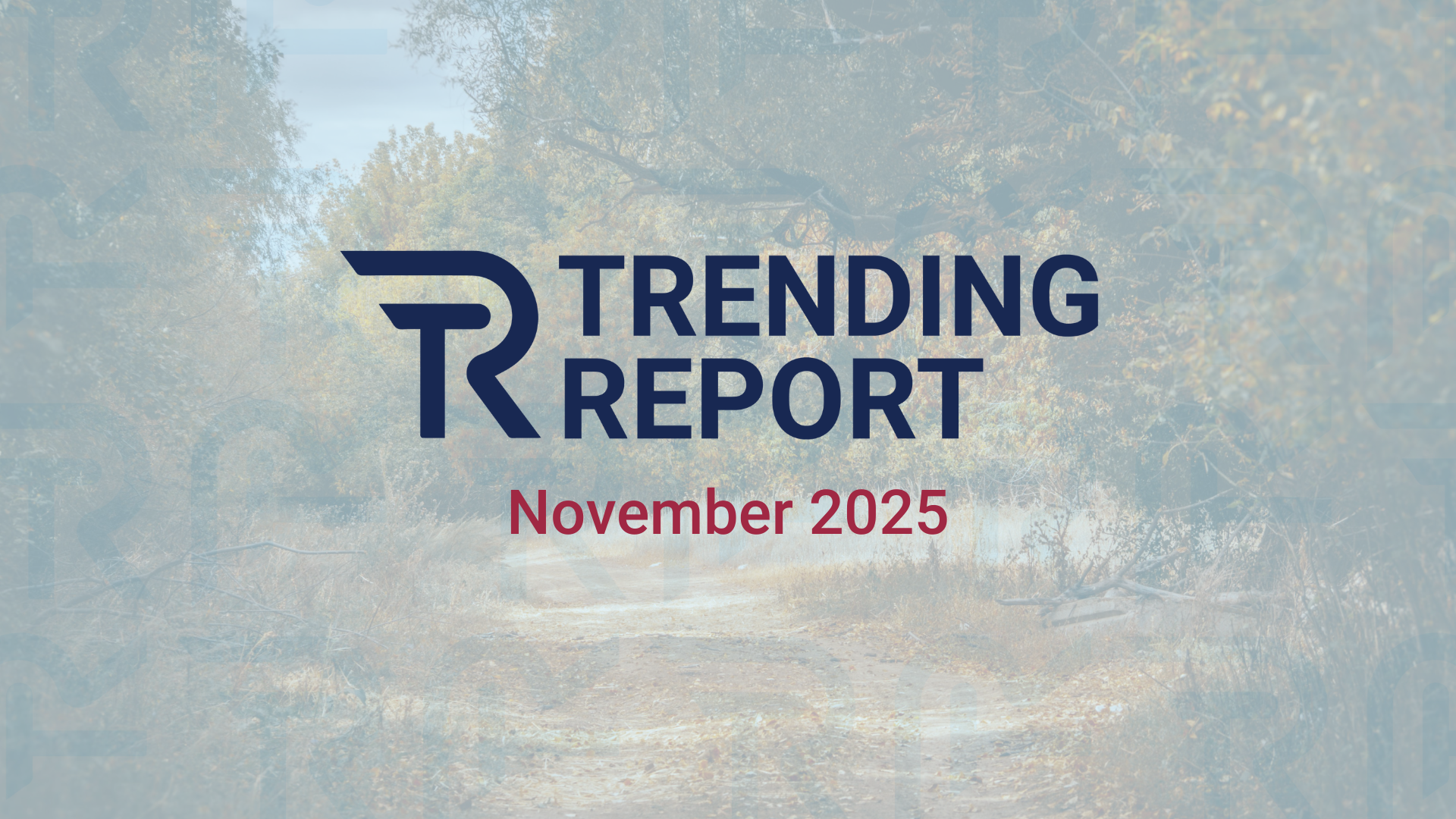What’s Trending: September Volatility and Long-Term Investing Lessons

In this September Trending Report, Kevin Roskam of USA Financial draws a clever parallel between Michigan’s early fall chill and market volatility—reminding us that just as a few cold days don’t mean summer is over, short-term dips don’t define long-term investment trends. Kevin breaks down the history of market corrections, the role of risk management in avoiding severe downturns, and what the upcoming Fed rate cut could mean for investors. With clear insights and timely perspective, this month’s report is all about separating noise from true signals and staying focused on long-term success.
In the September Trending Report, Kevin Roskam from USA Financial begins by reflecting on the changing seasons in West Michigan, noting that even though the area has just experienced one of its coldest September days on record, that does not mean summer is over. He uses this seasonal shift as a metaphor for how investors often misinterpret short-term dips in the stock market, mistaking them for long-term trends. Just as a couple of chilly days do not mean winter has arrived, a few down days in the market do not necessarily mean a bear market is beginning. This perspective sets the tone for the rest of his commentary, emphasizing the importance of distinguishing between temporary fluctuations and genuine trends.
Kevin then dives into a discussion of stock market corrections, highlighting how normal and expected they are. Using data on the S&P 500 dating back to 1928, he explains that dips of 3% or more occur, on average, about seven times per year, while a 5% decline happens roughly three and a half times annually. Corrections of 10% tend to occur about once a year, and more severe drops are much less frequent. The key point, he stresses, is that these events are part of the natural rhythm of the market. Yet investors often overreact to them, fearing that a moderate pullback is the start of something catastrophic. He explains that risk management strategies exist not to avoid every small dip, but to help protect portfolios from the devastating impact of severe corrections and bear markets. Volatility, he reminds viewers, is the cost of growth—without enduring short-term swings, investors cannot expect long-term returns.
The report then shifts to upcoming events with significant market implications, most notably the Federal Reserve’s anticipated decision to lower interest rates. Kevin points out that most analysts expect a quarter-point cut, and that much of this move has already been priced into the market. Importantly, he notes that the Fed’s actions are lagging indicators rather than leading ones. The central bank moves slowly and usually reacts to economic conditions rather than shaping them. To illustrate this, Kevin reviews historical data on how the Dow Jones has performed before and after rate cuts, noting that while volatility tends to increase in the months surrounding these decisions, the market often begins moving in a particular direction well before the Fed takes action. He cautions against assuming that a rate cut itself will immediately propel the market higher, since trends often unfold independently of Fed timing.
Another concept Kevin emphasizes is the role of probability versus certainty. Using charts that show expected ranges of market performance, he explains that while probabilities can offer guidance, they cannot guarantee specific outcomes. History shows that actual market results sometimes fall outside the expected range. This highlights the need for investors to stay disciplined and not make decisions based solely on what “should” happen. He ties this back to the broader theme of avoiding emotional reactions to short-term volatility and keeping a long-term mindset.
Kevin also provides a look at recent market performance, showing that despite the ups and downs over the past month, the S&P 500 has continued to trend upward overall. He reinforces the message that performance does not occur in a straight line, and that investors often second-guess their strategies during periods of turbulence. Even with the use of risk management tools, it is easy to feel frustrated when those tools do not perfectly time market exits and re-entries. However, the real purpose of these strategies is to mitigate the most damaging downturns, not to eliminate all volatility. He reminds viewers that different approaches—whether mutual funds, asset allocation, or more active management—can all work over time, but only if investors commit to them and stay invested through periods of uncertainty.
Closing the report, Kevin reiterates the importance of long-term discipline. With interest rate changes, shifting supply chains, and tariff impacts still on the horizon, short-term volatility should be expected. But the longer-term outlook remains positive, provided investors maintain grit and avoid being swayed by temporary market noise. Just as a few cold days in September do not bring the end of summer, a few market corrections do not mean the end of growth. The key, he concludes, is to keep perspective, remain committed to a disciplined strategy, and focus on long-term success.
--
The Trending Report is a monthly commentary series that explores topical trends taking place within the current market and economy. It aims to provide clarity and encourage Advisors and Investors as they navigate and make sense of current market conditions. The ongoing battle between short term emotions and the commitment to long term investing is real. This series seeks to help Advisors and Investors focus their energy on long term success. Hosted and published by the investment professionals at USA Financial, each episode offers valuable commentary and analysis into various economic factors and market movements. By tuning in, our host breaks down complex topics into easy-to-understand information.
The Trending Report is also published via a podcast for easier, on-the-go listening. Subscribe today via Apple Podcasts, Google Podcasts, or your preferred podcast listening ser
Author Info

Kevin Roskam is a Senior Advisory Business Consultant with USA Financial, joining the firm in 2005. He consults with advisors to tailor our...
Related Posts

Direct Indexing Explained: How Advisors and Investors Benefit
What if you could track an index, customize your portfolio, and reduce taxes - all at once? That’s the goal of direct indexing, a strategy gaining traction among advisors and investors alike.

Independent Broker-Dealer Solutions that Drive Advisor Growth
In today's competitive environment, you don't have time for anything less than complete solutions. Your clients expect excellence, and you deserve support partners who share that commitment.

What’s Trending: Why Active Management Matters When Emotions Run High
In this November’s Trending Report, Kevin Roskam of USA Financial dives into the emotional side of investing and why keeping short-term fears in check is crucial for long-term success. He shares a real-life client story that highlights how media-driven anxiety can derail financial plans and reminds us that market corrections aren’t just possible—they’re normal. Kevin explains how trends show the importance of active management in today’s market, where not all 500 S&P stocks are moving together. He explores how diversification, discipline, and a clear understanding of your portfolio’s purpose can help investors navigate volatility with confidence. Whether you’re an advisor guiding clients or an investor staying the course, this report is a timely reminder that disciplined strategies—not emotions—drive lasting results.

Direct Indexing Explained: How Advisors and Investors Benefit
What if you could track an index, customize your portfolio, and reduce taxes - all at once? That’s the goal of direct indexing, a strategy gaining traction among advisors and investors alike.

Independent Broker-Dealer Solutions that Drive Advisor Growth
In today's competitive environment, you don't have time for anything less than complete solutions. Your clients expect excellence, and you deserve support partners who share that commitment.

What’s Trending: Why Active Management Matters When Emotions Run High
In this November’s Trending Report, Kevin Roskam of USA Financial dives into the emotional side of investing and why keeping short-term fears in check is crucial for long-term success. He shares a real-life client story that highlights how media-driven anxiety can derail financial plans and reminds us that market corrections aren’t just possible—they’re normal. Kevin explains how trends show the importance of active management in today’s market, where not all 500 S&P stocks are moving together. He explores how diversification, discipline, and a clear understanding of your portfolio’s purpose can help investors navigate volatility with confidence. Whether you’re an advisor guiding clients or an investor staying the course, this report is a timely reminder that disciplined strategies—not emotions—drive lasting results.

